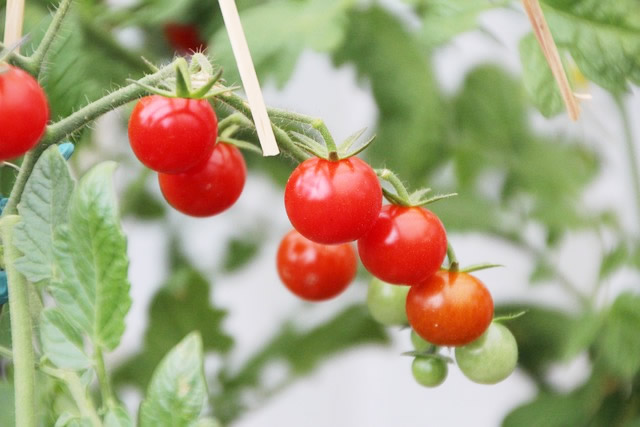先日から「The complex climate truth about home-grown tomatoes -「自家製トマトにまつわる気候の真実」を読んでいます。

・「自家製トマトにまつわる気候の真実」(1)
・「自家製トマトにまつわる気候の真実」(2)
・「自家製トマトにまつわる気候の真実」(3)
・「自家製トマトにまつわる気候の真実」(4)
・「自家製トマトにまつわる気候の真実」(5)
Crops such as tomatoes and asparagus, which, in conventional agriculture, may be flown long distances or require energy-intensive greenhouse facilities,
トマトやアスパラガスなど、従来の農業では長距離輸送やエネルギー集約的な温室施設を必要とする作物は
are especially good options for gardeners who want to grow their own while reducing their carbon footprint.
炭素排出量を削減しながらの自家栽培を望む園芸家にとって、特に良い選択肢となる。
Still, Sally Nex, author of the book How to Garden the Low-Carbon Way, says she was “massively frustrated” by the study and news reports about it.
それでも「How to Garden the Low-Carbon Way」という本の著者であるサリー・ネクスは、この研究とそれに関する報道には「大きな苛立ち」を覚えたという。
“The problem is the headline that people take away from it,” she says.
「問題は、人々が取りあげる見出しです」と彼女。
“It puts people off growing their own vegetables.”
「あれでは皆が野菜作りを敬遠するようになります。」
She argues that many gardeners are keen to re-use, re-purpose and recycle,
彼女は多くの園芸家は再利用、再目的化、リサイクルに熱心であり
make their own fertiliser with plants such as nettles or comfrey,
イラクサやコンフリーなどの植物を使って自家製肥料を作り、
and use “no dig” methods to disturb the soil as minimally as possible, which helps lock carbon in the ground.
「掘らない」方法を用いて土壌をできるだけ攪乱せず、地中に炭素を固定するのに役立っていると主張する。
Mulching, adding compost or wood chip to garden beds, for example, has the same effect.
また例えば庭の花壇に堆肥や木屑を入れる、マルチングも同じ効果がある。
イラクサやコンフリーではありませんが、辺りに生えている雑草で肥料を作る方法は、Youtubeでもたくさん紹介されています。
記事に登場するサリーさんのおっしゃる通り、多くの園芸家はリサイクルや自然な循環に熱心で、環境を壊さないよう考えていると思います。
それも自然を愛するからこそなのですよね。
理由は単純明快!「少ないコストでしっかり楽しく学べるから」。
私自身の経験(高機能でビックリ)をびっしり書いていますので、良かったら読んでみてください。
下のバナーからどうぞ!






